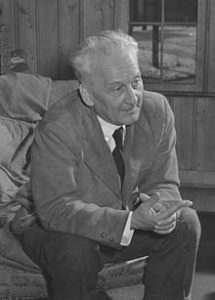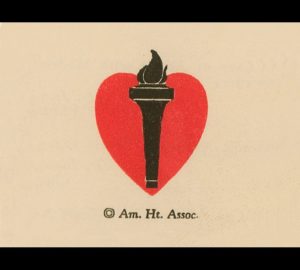Following up on an earlier post about the history of the NIH R01 grant, which morphed into a history of the NIH and the National Cancer Institute, I wanted to find out more about the history of the American Heart Association and the first AHA research awards.
This was much easier information to obtain! It is on the AHA website. The first award went to biochemist, Dr. Albert Szent-Gyorgyi, who was fascinating and possibly the topic of a future post. He received the first AHA grant in 1948 while he was at the Marine Biological Laboratory in Woods Hole, MA. He primarily contractile components of muscle including the heart.

Dr. Albert Szent-Gyorgyi (https://en.wikipedia.org/wiki/Albert_Szent-Gy%C3%B6rgyi)

The first AHA logo (https://www.heart.org/en/about-us/history-of-the-american-heart-association)
Easily finding this answer led to another question. When and how did the AHA begin in the first place? The public and physicians knew little about cardiovascular diseases in the early 1900’s when the AHA was founded. Heart disease was thought to be a slow, drawn-out death sentence. A group of 6 physicians believed that with scientific research, a cure could be found.

One of the first AHA meetings.(https://www.heart.org/en/about-us/history-of-the-american-heart-association)
The 6 founding members of the AHA were: Drs. Lewis A. Conner, Robert H. Halsey, Paul D. White, Joseph Sailer, Robert B. Preble, and Hugh D. McCulloch. Since the founding in 1924, the AHA’s has been primarily a scientific association. After awarding the first research grant in 1948, AHA began publishing its first journal Circulation in 1950.
From that point on, the AHA was instrumental in funding research that linked smoking and saturated fats to heart disease. AHA research was instrumental in the development of implantable pacemakers, CPR, artificial heart valves, statins, and AEDs. They also established a personal favorite of mine, the Jump Rope for Heart, which I proudly participated in as a child.
There were several changes geared toward unifying the AHA’s objectives, research standards, and guidelines through the years. In 1995, the AHA declared its strategic driving force: Providing credible heart disease and stroke information for effective prevention and treatment. The AHA still functions as a scientific organization but one that faces first and foremost on the public. The AHA’s driving force guides the scientific efforts of AHA members to public benefit.
Are you an AHA member and interested in applying for a research program or award?AHA research funding opportunities are listed at https://professional.heart.org/en/research-programs/application-information